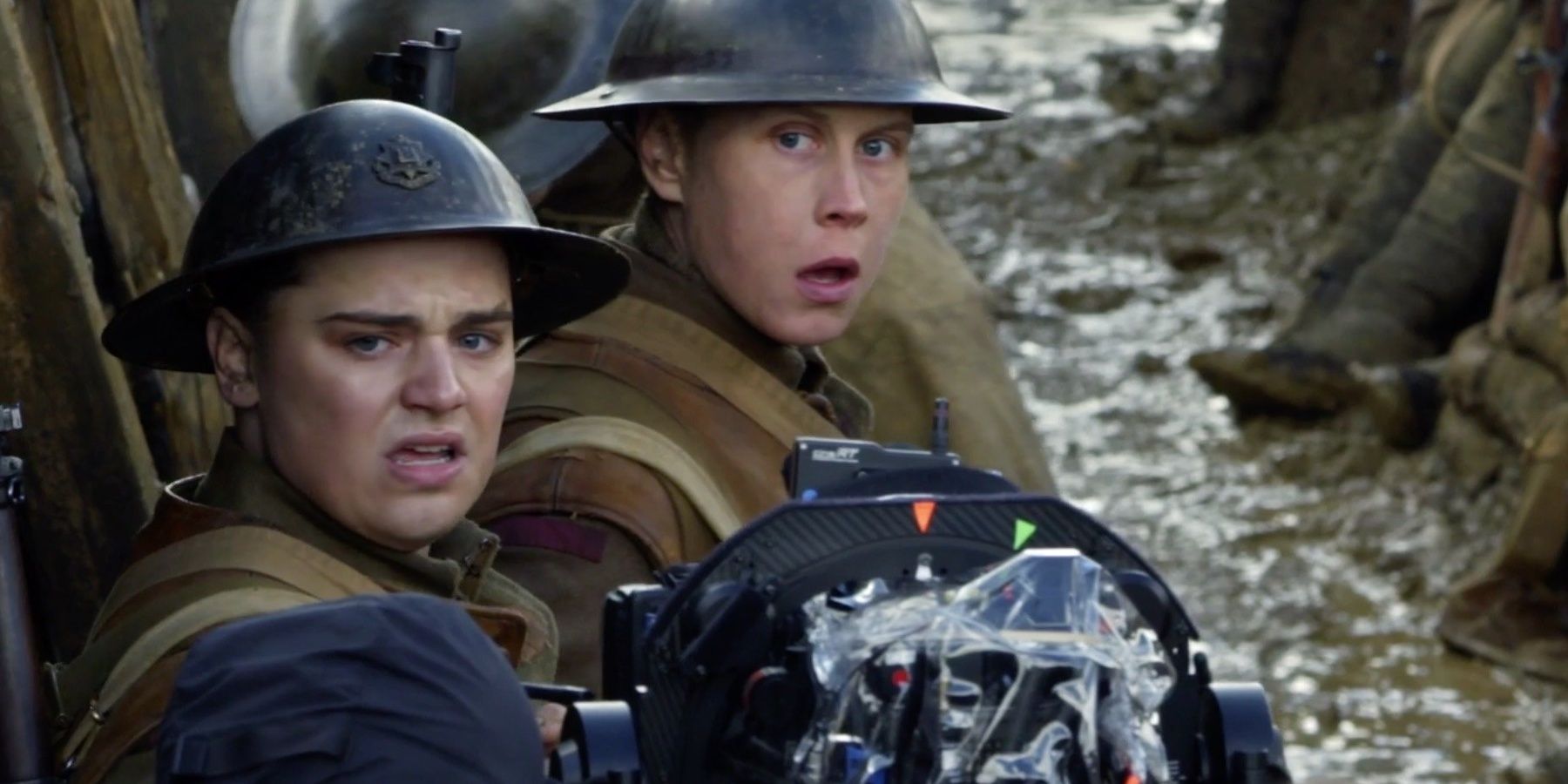While 1917 stands out as one of the leading Oscar contenders, totaling ten nominations including Best picture, the film has a major flaw with its protagonists that prevents the film from being as compelling as it could be. Directed by Sam Mendes, 1917’s biggest problem is the two main characters’ basic design, which provides very little backstory and makes it harder for audiences to identify with the characters on an emotional level.
The two main characters of 1917, Lance Corporal William Schofield and Lance Corporal Tom Blake (George MacKay and Dean-Charles Chapman, respectively) match the design of an “Everyman,” ordinary people who are devoid of individual characteristics so that the audience can better identify with them. Since the simplistic character design originated in Medieval morality plays, it was quite a gamble to adapt the antiquated literary technique for the screen when the audience for which it was intended is living in a modern individualistic culture. By excluding any sort of exposition about Schofield and Blake in 1917, the everyman character design does the opposite of what it intends to and distances the audience from the two main protagonists.
Throughout the beginning of 1917, the audience receives little to no background about Schofield and Blake. Vital exposition about William Schofield is only revealed at the end of the film, when he looks at a picture of his wife and two daughters after he’s completed the mission. Tom Blake is provided with even less backstory, for whom it’s vaguely mentioned that he has an older brother in the Second Battalion of the Devonshire Regiment which is about to be ambushed by the German army. By making the characters essentially blank slates, the heart of 1917 seems to be missing as the two main characters are reduced to the basic arc of a soldier that lives and breathes for the mission alone.

This concept is most prevalent in 1917 through the character of William Schofield, who ends up becoming the main character after Tom Blake’s unexpected death. While Schofield has something to fight for, the story arc of 1917 has Schofield motivated not by the idea of returning to his family, but by the justice of saving 1,600 people from imminent death, opting more for the glorification of a soldier versus the personal journey of an individual. If additional backstory about the two main characters had been shared in the opening scenes of 1917, the movie would have garnered the emotional resonance it needed to connect with the audience, especially in the scene involving Blake’s death. When Blake is stabbed by a German pilot, the audience is stunned not so much by the suddenness of his death, but by the emptiness of the scene and how easily the story moves on without him.
Despite its flaws, 1917’s everyman character design might have been a way to make the film more historically relevant as a World War I movie. From start to finish, 1917’s main objective is the mission at hand: to reach Colonel Mackenzie (Benedict Cumberbatch) in the Second Battalion and warn him not to execute the planned attack on the German army, which could endanger the lives of 1,600 Englishmen. With the mission as the driving force of the film, 1917’s story conveys the same nationalism that was prevalent during World War I, that the mission for your country is above and beyond your own personal needs. In 1917’s opening scenes, Schofield mentions that Blake could have picked anyone to accompany him on this assignment and he wonders why he choose him. With Schofield taking up the mantel of leading character halfway through the film, this statement further implies that while the mission needs to be completed, it doesn’t matter who does it as long as it’s successfully accomplished.
While 1917 is clearly an immersive and compelling film, from its visually aesthetic cinematography to its one-shot camera trick, its biggest flaw may in fact be the film’s only drawback that could cost the movie its Oscar win for Best Picture. Since Schofield and Blake lacked the individuality found in fully formed characters, their simplistic everyman character design robbed 1917 of the emotional resonance it needed to elevate the film from a thrilling war epic to Best Picture.




